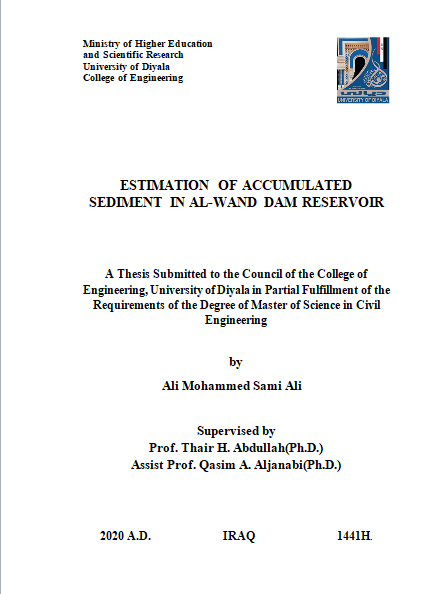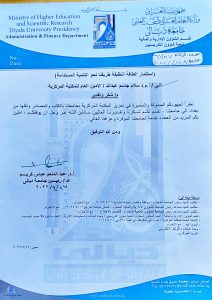ABSTRACT
The sedimentation process is the most serious problem in the operation and management of reservoirs. Sediments weaken the performance of reservoirs, reduce their storage capacity and disturb typical operations. It is essential, therefore, to assess the storage capacity of reservoirs regularly and follow up the sedimentation process for effective operation. In this study, the sedimentation of Al-Wand Dam Reservoir, was estimated. It is located in Diyala Governorate, north east of Iraq. Although the operation of the dam was started in 2012, there is a lack in studies related to assessing its reservoirs sedimentation. The first method, SWAT 2012 model, was used for simulating the surface runoff and the yielding of sedimentation from Al-Wand dam watershed, in Al-Wand river basin, within Iran and Iraq. Moreover, the second method GIS (Geographic Information System) applications with a 30 m DEM and soil map were used to present and analyses the sediment yielding in Al-Wand Dam Reservoir, Khanaqain. The input data to the SWAT model was based on the available data from 1979 to August 2014 in terms of precipitation, air temperature (the minimum and maximum values), relative humidity and solar, in addition to the data of stream flow which was available from 2006 to 2017. The catchment area of 3028.37 km2 was surveyed using remote sensing techniques and satellite images which include Digital Elevation Model (DEM) maps, land cover maps and soil maps of Food and Agriculture Organization (FAO). The results showed that the average Annual Basin and maximum of surface runoff for 33-year period from 1979 to 2014 is equal to (39.02, 38.84 mm) respectively and the average Annual Basin and maximum of total sediment loading through 33-year is equal to (9131,2783 T/Km2) respectively. As for minimum surface runoff and sediment loading equal to zero htrough the month june-septamber. In this study, the stream flow from 2006 to 2011 was used for model calibration and the 2012 to 2014 flow data was used for model validation. The performance of the model was evaluated by using a time series plots of observed and simulated value and the statistical measures of coefficient of determination (R2) equel zero and the Nash-Sutcliffe efficiency (NS) (-423675).The statistical analysis of calibration results for Al-Wand watershed don’t showed satisfactory agreement between observed and simulated daily values, with an R2 value. In recent years,which is (GIS) began to be applied to the system as a means of assistance effective in handling data and inclde it in the computer data available from different maps regarding topography, soil type, land cover, and others.The work is directed to estimating sediments in a volumetric method by applying GIS applications. The second method is to estimate the sediments of the dam reservoir by using GIS applications based on the reference elevation of the dam reservoir using the hydrographic survey of digital elevation modeling maps of 2011 and the bathometric survey of 2015. This was conducted a study that included four Cases that were the closest to reality and the nearest for the design who was 50 years. This study comprised 4 km2 of the reservoir and 215 m (a.s.l.) from levels, along with measuring the volume of the dam reservoir for these periods and finding out the differences in volume between them, to reach a sediments volume about 5,695,283 m3 during the above periods and an annual average of about 1,423,821 m3 per year. The operated life is expected to be 46 years in the case of repeated climatic conditions and similarity for the period




